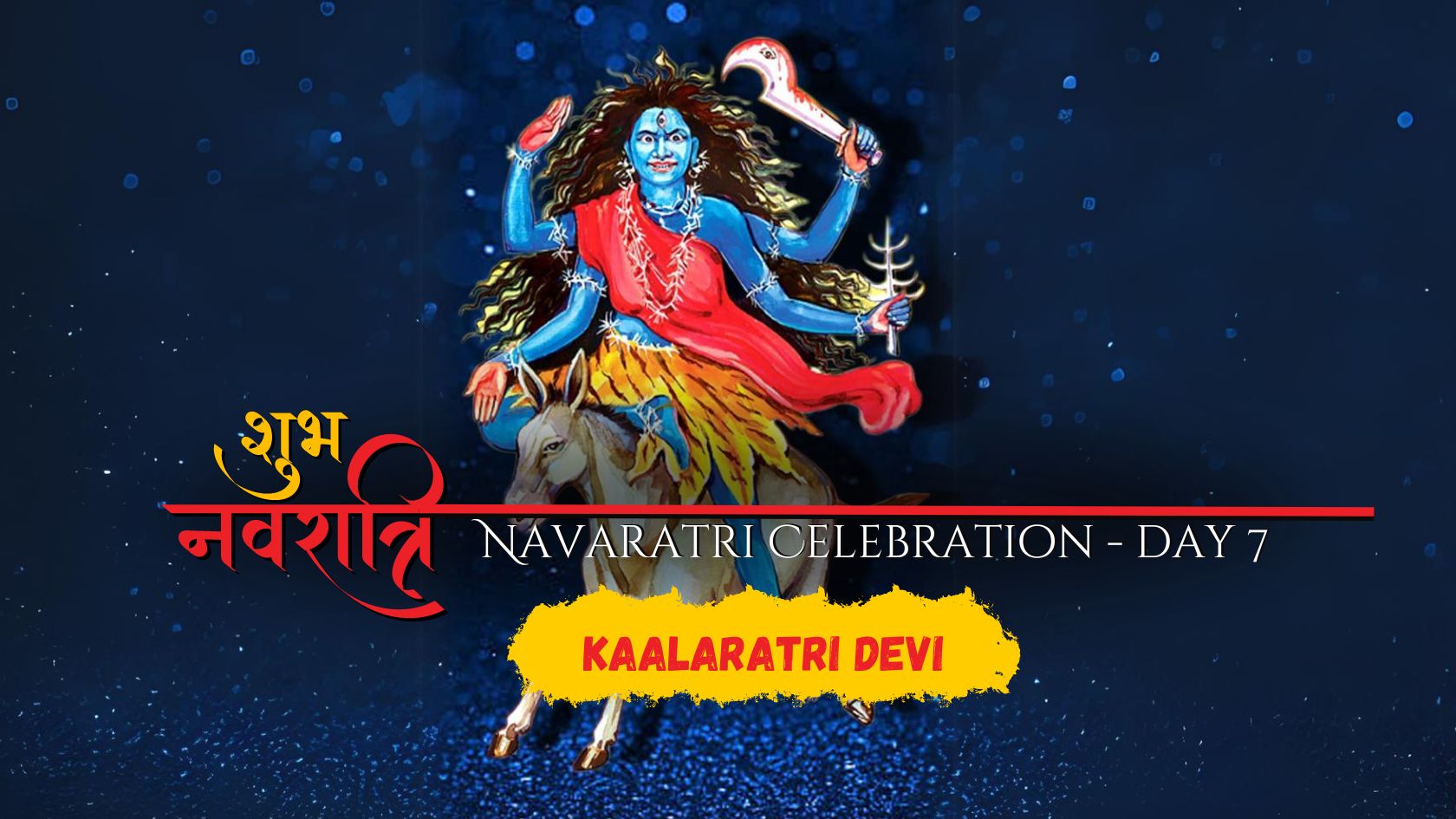
The Goddess revered and worshipped on the 7th day of Navaratri is Maa Kaalaratri. She is a fierce manifestation of Devi Durga. She is known to destroy evil demons and negativity. Devotees worship her to protect them from obstacles on their path and save them from negative energies. Goddess Kaalaratri is associated with Shani Bhagavan. Hence, devotees worship her to eliminate adverse effects from the planets (mainly from Planet Saturn).
Origin and meaning of the name
Maa Kaalaratri is the destroyer of ignorance and remover of sorrow. Her name has its origin from two words- Kaala and Ratri. Kaala means time or the colour black, and Ratri means night. Goddess Kaalaratri is known as Shubhankari since she protects her devotees from harm and danger.
Depiction of the Goddess
Maa Kaalaratri is depicted typically with a dark complexion ( either bluish or black). She has four arms. Two of them wield fierce weapons like a Scimitar ( a type of curved sword)/ a thunderbolt, and an iron thorn. The other two hands are in Abhaya Mudra and Varada Mudra. It indicates that Goddess Kaalarati blesses her devotees and protects them from evil. She wears a long necklace (made of skulls) that is white. It illuminates brightly like a moon. She has three eyes, and they emanate rays of light/flames. Her thick black hair is wavy and left untied as she rides on a donkey. The sheer look of her sends shivers down one’s back.
The story behind the Avatar
A long time ago, there were two demons called Shumba and Nishumba. They were evil and wreaked havoc wherever they went. The demons decided to invade Devaloka. They fought with Lord Indra and the other Devas and easily defeated them. The demons started creating trouble for the Devas. Lord Indra approached Lord Shiva in the Himalayas for relief from these evil forces. Lord Shiva listened to the Devas and said Goddess Parvathi was the only one who could help them. So, the Devas approached Goddess Parvathi. Goddess Parvathi looked at the sad state of affairs and decided to help the Devas live a trouble-free life. She created Goddess Chandi to kill the demons and breathed life into her.
Shumba and Nishumba had two army generals called Chanda and Munda, who were sent to the battlefield to fight. Goddess Chandi created Devi Kaalarati, who marched ahead and faced the demons, Chanda and Munda. She killed both these demons and hence got the name “Chamunda”. Hearing the defeat of these two demons, another very fierce demon called Raktabeeja ( Rakta means blood and Beeja means seed) emerged and challenged the Goddess. This demon had a powerful boon with him. He could escape his death - if a single drop of blood is spilt on the floor, another demon just like him could come alive. Thus, each time the Goddess killed him, he sprang back to life. Goddess Kaalratri was enraged and finally drank up all his blood before killing him.
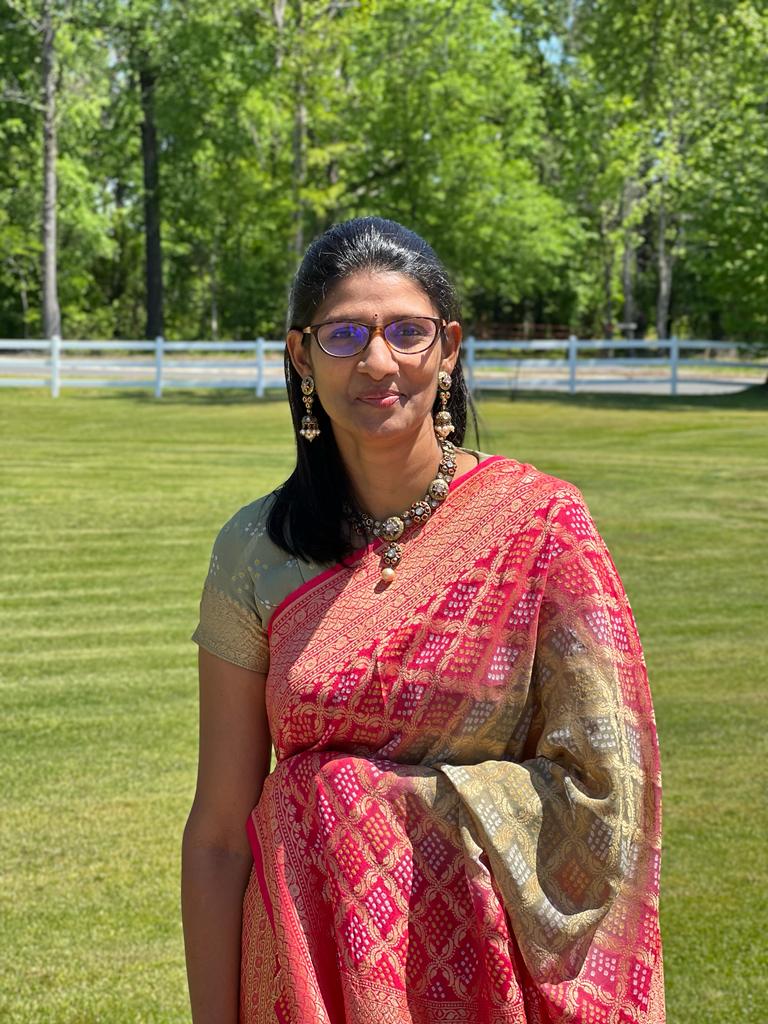 Vaishnavi Gurusankar is a passionate educator, a wife and a mother. She has over a decade of experience as an educator and has been closely working with teachers and children of all ages. She is also an active parenting blogger and founder of Magical Unicorn, an exclusive parenting blog founded on Indian ethos, values and stories at its core. She has also authored the book "Bharatyam : Science behind Hindu Practices & Way of Life"
Vaishnavi Gurusankar is a passionate educator, a wife and a mother. She has over a decade of experience as an educator and has been closely working with teachers and children of all ages. She is also an active parenting blogger and founder of Magical Unicorn, an exclusive parenting blog founded on Indian ethos, values and stories at its core. She has also authored the book "Bharatyam : Science behind Hindu Practices & Way of Life"
PREVIOUS ARTICLE
NEXT ARTICLE
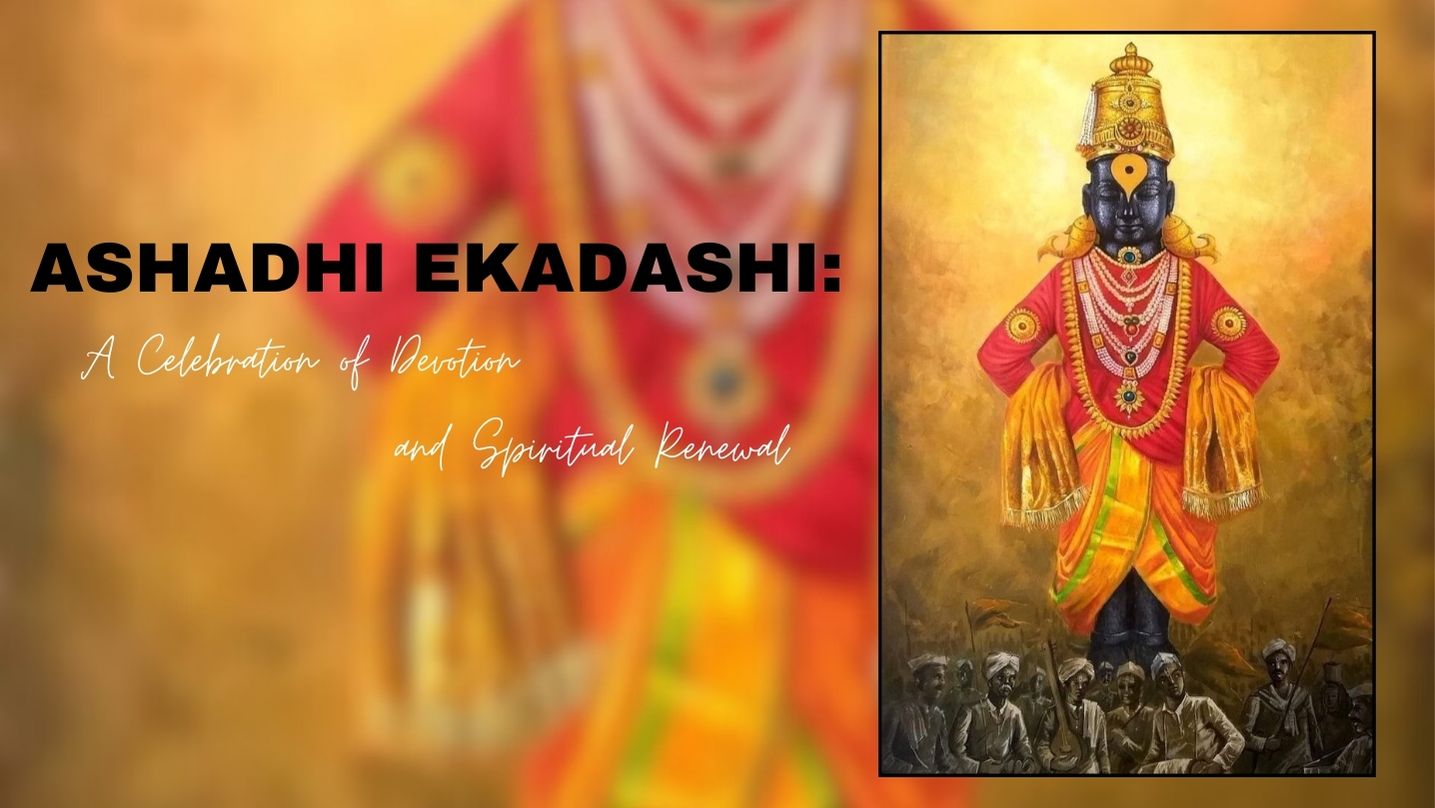
Ashadhi Ekadashi, also known as Shayani Ekadashi, falls on the 11th lunar day (Ekadashi) of the bright fortnight (Shukla Paksha) of the Hindu month of...
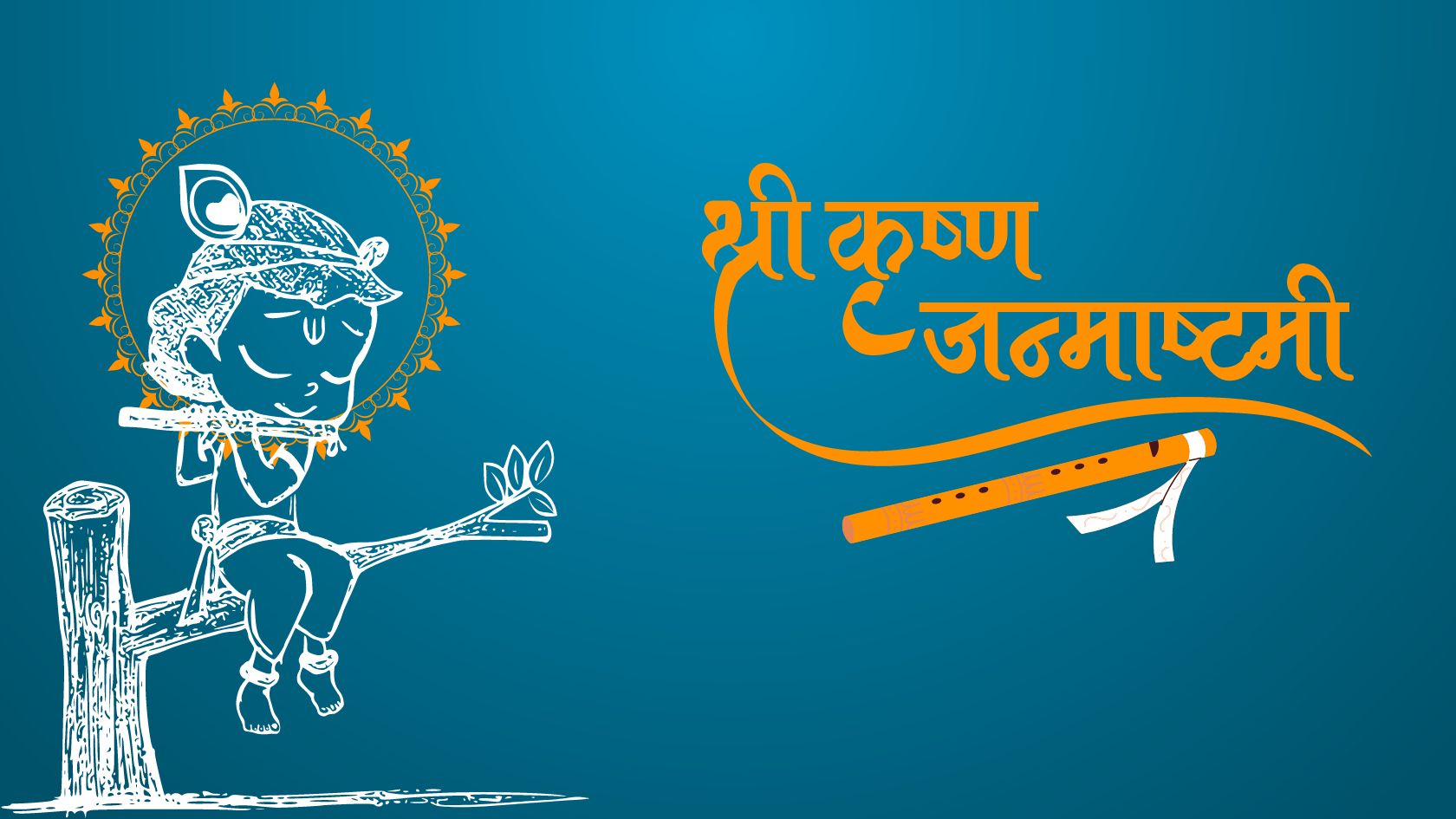
Every year, as the monsoon rains dance on the fields of India, an ancient story unfolds in the hearts of millions. It is the story of Krishna, the bel...
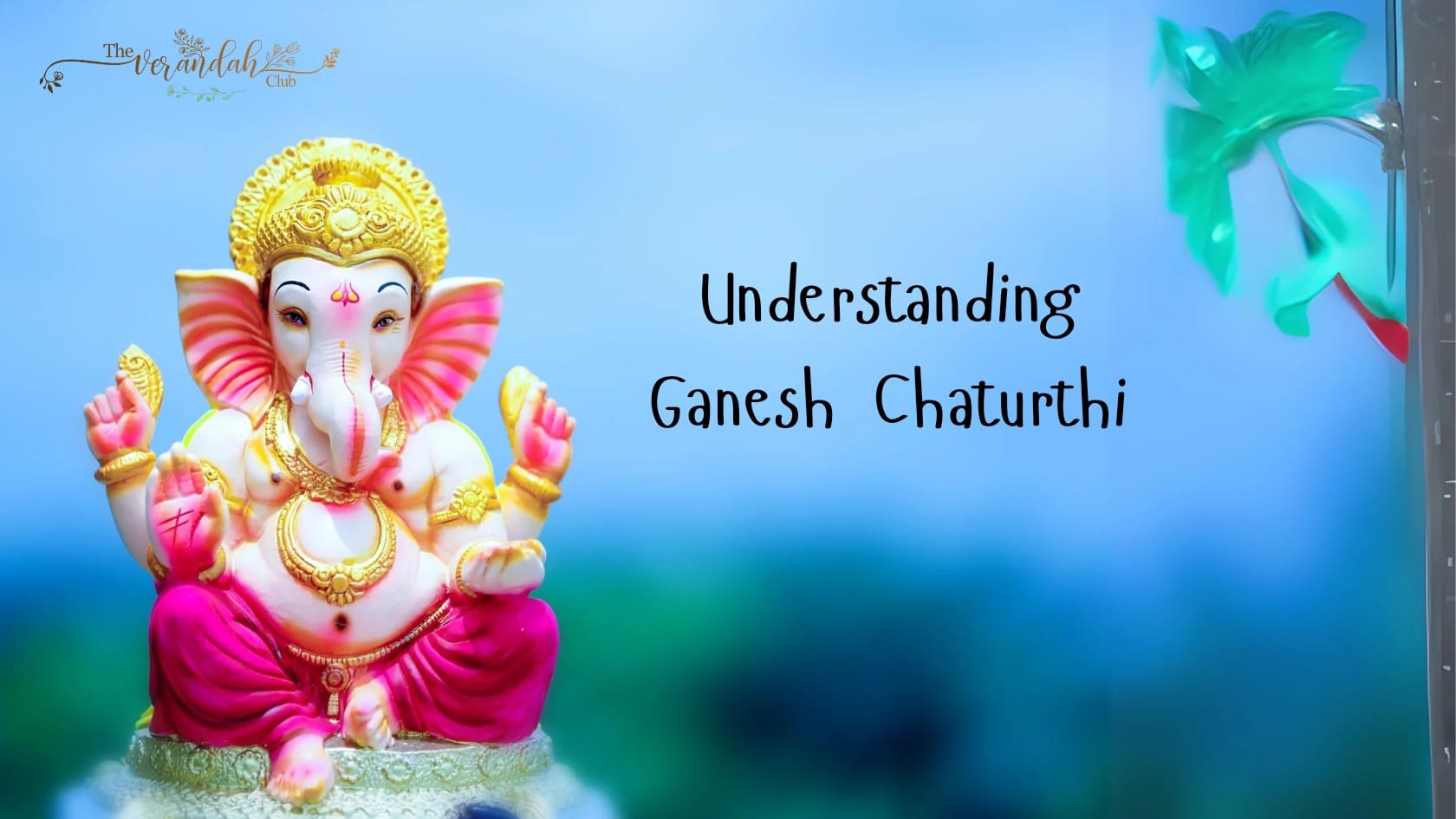
Ganesh Chaturthi, also known as Vinayaka Chaturthi, is a significant Hindu festival that honors Lord Ganesha, the deity revered as the remover of obst...